








Collapsible content
Today, we’re going to put our “wizarding” hats on and fill our cauldrons with an amalgam of strong ingredients as we learn to play Simply Fun’s Amalgam.
You can play Amalgam with 2 to 4 players, aged 10 and up.
Amalgam is a great game for developing strategy skills, as players collect as many of the same ingredient cards as they can, while at the same time, considering what their opponents are collecting.
Amalgam also improves planning skills. Players think ahead, trying to collect cards where the number on the card equals the number of spaces they want to move on their next turn. Players try to project the number of points they may earn for that card at the end of the game as well.
To set up the game, first assess how many players will be mixing potions. For 3 to 4 players, use all 72 ingredient cards. If only 2 players are playing, remove 8 ingredient cards with the number labels that match the colors of the pawns not being used.
Shuffle the ingredient cards, the 2 Wizard’s Wild cards, the 6 Orange Spell cards and the 4 Pink Spell cards together. Then place them face down in a stack. One by one, flip over the cards and place them in rows, creating a grid. Put the remaining cards in a draw pile. Make sure to place the corner cards in corners with their arrows pointing in a clockwise direction.
Now, give each player: one of the 4 cauldron cards, one matching colored tower pawn and one matching score card. Players will then place their tower pawns next to a corner card. Only one pawn is allowed per corner.
Finally, place the cauldron cards face up in front of each player alongside their score cards.
The object of the game Amalgam is to fill your cauldron with as many of the same type of ingredient cards as you can. Your score card will tell you which cards will help you collect the most points.
To begin the game, the first player moves their tower pawn clockwise around the outside of the grid according to the number of spaces shown on the top card in their cauldron.
If it’s the first turn of the game, move the number of spaces on the cauldron. Afterwards, move the number of spaces on the top card of the cauldron.
If the pawn stops in front of a row, choose one card from that row. The card may be an Ingredient Card, a Wizard’s Wild Card, a Flee Ye Cauldron Spell Card or a Sneak a Peek Spell Card. Refer to the Card Instructions for more details on the actions players must complete when they select a card.
If the pawn stops next to a corner, the player may not draw a card and their turn is over.
Once the action on the card is completed, the turn is over and the player replenishes the grid with a new Amalgam card from the draw pile.
Play continues in a clockwise direction with players continuing to take turns even when the draw pile runs out.
The game only ends once any one row on the grid is completely empty.
When one row is empty, all players look at the cards in their cauldrons and use their score cards to calculate their points for each type of ingredient. Cauldron numbers are not counted.
The player with the highest final score wins the game!
For advanced game play, players may add the 10 Recipe Cards to the mix by randomly giving each player a recipe card of each color. Refer to the instructions for this variation.
Get ready to make powerful potions with Simply Fun’s Amalgam!

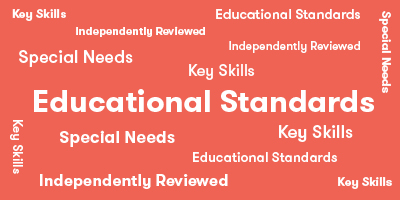
Core Standard*: Math
- Math
- Model with mathematics: Grade Level 5,6
- Attend to precision
- Look for and make use of structure
- Standards for Mathematical Practice

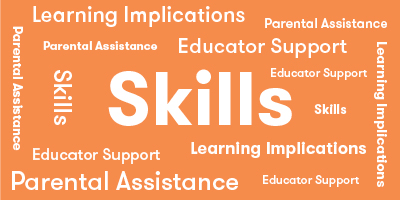
Explore
What Does Child Do To Use Skill In The Game?
Players need to look closely at board to understand options and make good choices.
How Parents Can Assist Learning
Parental support is not necessarily required. However, if you notice a child is not making the best choices for accumulating points, encourage the child to think about the following factors as they examine the cards on the playing area: 1) point value, 2) type of Ingredient, 3) number of spaces they will move next turn, 4) spell cards they may want to collect or use, 5) does the color of the card (which is found in the lower right corner) match their pawn.
Learning Implications and Educator Support
Amalgam is a good game for helping children learn to examine carefully and evaluate multiple factors in order to make a decision.
If you notice a child is not making the best choices for accumulating points, encourage the child to think about the following factors as they examine the cards on the playing area: 1) point value, 2) type of ingredient, 3) number of spaces they will move next turn, 4) spell cards they may want to collect or use, 5) does the color of the card (which is found in the lower right corner) match their pawn.
Determine
What Does Child Do To Use Skill In The Game?
This is one of the primary skills used in Amalgam as each turn involves thoughtful determining and decision-making.
How Parents Can Assist Learning
Parental support is not necessarily required. However, to help them make the best decisions, you may remind children to think about their scoring strategy (e.g. what ingredients are they collecting), observe what cards other players are collecting, and consider when and how to use spell cards.
Learning Implications and Educator Support
Determining what to do on your turn in Amalgam involves skills like analysis, reasoning, observation and prediction.
To help children make the best decisions, you may remind children to think about their scoring strategy (e.g. what ingredients are they collecting), observe what cards other players are collecting, and consider when and how to use spell cards.
Compare
What Does Child Do To Use Skill In The Game?
Players need to compare the cards they have collected with those remaining on the playing area.
How Parents Can Assist Learning
When first learning to play the game, allow children to look at their collection pile of Ingredient Cards. This will enable them to compare more easily.
Learning Implications and Educator Support
When first learning to play the game, allow children to look at their collection pile of Ingredient Cards. This will enable them to compare more easily.
Remember
What Does Child Do To Use Skill In The Game?
Players need to remember the cards in their Ingredient Cards pile in order to make good scoring decisions on their next turn. Additionally, players will do better if they remember the cards others have collected.
How Parents Can Assist Learning
When first learning to play the game, allow children to look at their collection pile of Ingredient Cards. This will enable them to compare more easily without having to remember what they have already collected.
Learning Implications and Educator Support
While Amalgam is primarily a strategy game, it is good for building short term memory skills. Children try to recall which Ingredient Cards they have collected in order to decide which card to collect or move towards on their next turn.
When first learning to play the game, allow children to look at their collection pile of Ingredient Cards. This will enable them to compare more easily without having to remember what they have already collected.
Predict
What Does Child Do To Use Skill In The Game?
Amalgam is a highly strategic game where players are continuously analyzing the possible consequences of their choices and predicting the actions of others.
How Parents Can Assist Learning
To help children evaluate different options, encourage them to "Wait. Look. Think."
Help them think about the impact of varying plays on their score as well as limiting the points of the other players. For example, ask children to describe aloud the potential reward and cost selecting a particular Ingredient Card. Does it help them increase their score, or block another player from scoring?
Learning Implications and Educator Support
In order to make predictions, children use spatial reasoning, risk and reward analysis, and complex comparison. Also, children need to change perspective, imagining being their opponents, in order to have optimal predicting skills.
Educators may want to ask open ended questions to encourage more thoughtful analysis and prediction. For example, "What options do you see? How will the card you pick set you up for scoring on your next turn? What do you think others are trying to collect? What do you think an opponent might do in response? Is your strategy to maximize points or block opponents from scoring?" This requires playing non-competitively for the purpose of learning.
Plan
What Does Child Do To Use Skill In The Game?
Planning is closely tied to predicting in playing Amalgam. Players need to think about how to move their Wood Tower Pawn to fulfill their strategy, while responding to the moves of other players.
How Parents Can Assist Learning
To help children evaluate different options, encourage them to "Wait. Look. Think."
Help them think about the impact of varying plays on their score as well as limiting the points of the other players. For example, ask children to describe aloud the potential what will happen on their next turn if they pick a particular Ingredient Card. How does this help or hinder them?
Learning Implications and Educator Support
Planning is an important skill for developing strategic thinking, persistence and reaching a goal. In Amalgam, it is particularly important because each card a child selects determines how their Wood Tower Pawn will move on their next turn.
Educators may want to ask open ended questions to encourage more thoughtful planning. For example, "What options do you see? How will the card you pick set you up for scoring on your next turn? What do you think others are trying to collect? What do you think an opponent might do in response? Is your strategy to maximize points or block opponents from scoring?" This requires playing non-competitively for the purpose of learning.
Practice
What Does Child Do To Use Skill In The Game?
Playing Amalgam is a good way to practice and improve strategic thinking.
How Parents Can Assist Learning
When learning this game, play several rounds collaboratively with each player's Ingredient Cards visible. Talk about different moves and the consequences of each. Try asking open ended questions to encourage more active learning. For example, "What options do you see? How will the card you pick set you up for scoring on your next turn? What do you think others are trying to collect? What do you think an opponent might do in response? Is your strategy to maximize points or block opponents from scoring?"
Learning Implications and Educator Support
Amalgam has several implicit levels of mastery. Therefore, the more children play the more capable they will be in developing and executing increasingly sophisticated strategies and adaptive responses. Also, as they become proficient, they will be able to teach others. Teaching others demonstrates mastery, the final stage of learning, and is wonderful for building self-esteem, confidence and intrinsic motivation.
Solve
What Does Child Do To Use Skill In The Game?
In order to win Amalgam, players need to adapt to Ingredient Cards being collected and Spell Cards being used by others.
How Parents Can Assist Learning
As the game is being learned, children may select cards in non-strategic ways. If you see this, ask the child to explain their thinking and discuss what they might do differently next time.
After children have mastered the basic strategies, scoring and use of Spell Cards, they learn new information constantly during game play. This information directly effects how children plan, strategize, adapt and ultimately solve the game.
Beyond the game, the ability to shift strategies based on new information can help children cope with the stresses of change in other areas of their life.
Learning Implications and Educator Support
Amalgam involves use of visual spatial problem solving, perspective changing, risk and reward analysis, and if/then problem solving.
After children have mastered the basic strategies, scoring and use of Spell Cards, they learn new information constantly during game play. This information directly effects how children plan, strategize, adapt and ultimately solve the game.
Review
What Does Child Do To Use Skill In The Game?
Players review when they total and share their scores. In the advanced version of the game, players also use Recipe Cards for additional scoring options.
How Parents Can Assist Learning
No special adult support is required.
Learning Implications and Educator Support
No special adult support is required.
*Data compiled from CCSSI ELA Standards, WA Science Standards, and Washington Social Studies Standards

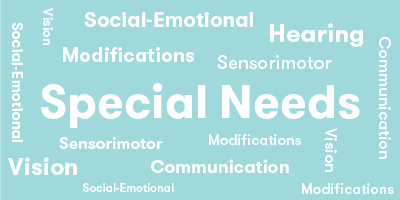
Cognitive
Suggestions for How to Modify Play Experience
Amalgam is a complex strategy game, with many different components to play. It is not a good match for children with cognitive challenges.
Communication
Suggestions for How to Modify Play Experience
No discussion is required to play Amalgam, but players will comment on each others' moves as the cards they are collected by others or spells are played on them. Encourage the child with communication issues to make comments after each turn.
Sensorimotor
Suggestions for How to Modify Play Experience
The Tower Pawn is large, so children with minor fine motor problems should not have difficulty moving it. Players also have to pick up, place and maneuver the cards on the board and in their cauldron. Depending on the child's level of dexterity, they may need to play with the assistance of other players.
Social Emotional/Behavioral
Suggestions for How to Modify Play Experience
Amalgam is a complex strategy game, with many different components to play. This may make the game difficult for children who are impulsive or have low frustration tolerance. Encourage the child to take their time. Remind the child of what to pay attention to pay attention to: 1) point value, 2) type of Ingredient, 3) number of spaces they will move next turn, 4) spell cards they may want to collect or use, 5) does the color of the card (which is found in the lower right corner) match their pawn.
If the child becomes overwhelmed or angry, help the child review his and others' moves, so they can approach the next move with a plan. First, acknowledge the child's anger. For example, "I understand you are angry about Jamal's move with the Spell Card. Let's all take a deep breath, and have Jamal tell us how he decided to make that play. I want to learn so I can do something like that."
Vision
Suggestions for How to Modify Play Experience
Amalgam is visually complex and thus too difficult for person's with low vision to be able to scan and select moves.
Hearing
Suggestions for How to Modify Play Experience
Amalgam can be played without communication, but sign language or other assistive communication devices will assist players in discussing various moves.
*Data compiled from CCSSI ELA Standards, WA Science Standards, and Washington Social Studies Standards

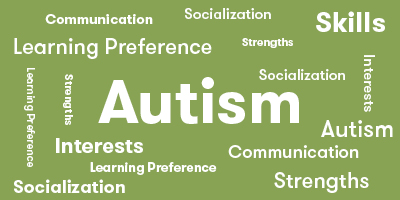
Autism Strengths & Interests
Short Summary of Strengths & Interests
- Short term memory building.
- Strategic and adaptive thinking.
- Predicting and planning.
Is good at matching visual items
Is This Game Appropriate? Yes
Description
Players earn more points for matching and collecting the same ingredients. Players need to remember the pictures of the ingredients they have already selected and find more of the same card.
Has a good memory for sensory details, including visual, touch, taste and smell
Is This Game Appropriate? Yes
Description
Players need to remember the pictures of the ingredients they have already selected and find more of the same card.
Has a good memory for words, phrases and dialouge
Is This Game Appropriate? Yes
Description
For many questions, players will draw on prior life experiences in order to answer and engage in conversation.
Has a good memory for pictures, numbers and patterns
Is This Game Appropriate? Yes
Description
Players need to remember the pictures of the ingredients they have already selected and find more of the same card.
Likes to put things in order or a sequence
This game is not appropriate
Learns through visualizing or "replaying" actions in their mind
Is This Game Appropriate? Yes
Description
Remembering successful strategies from previous plays or games may help players be successful.
Likes activities with rules, such as math and phonics
This game is not appropriate
Is very concrete and literal
This game is not appropriate
Learns in small "chunks" (for example, phone numbers are 3 chunks of number xxx-xxx-xxxx that are combined together)
This game is not appropriate
Is good at nonverbal reasoning and logic
Is This Game Appropriate? Yes
Description
Amalgam is a game that requires nonverbal reasoning. Players use visual and spatial strategies to move around the board and gather the cards they need to win.
Likes spatial problem solving
Is This Game Appropriate? Yes
Description
Amalgam requires spatial problem solving as players move around the board, select Ingredient and Spell Cards that both give them points and lead them to their next move. This requires players to think ahead to what will benefit them on their next move.
Can read well with good vocabulary, though may not fully comprehend content
This game is not appropriate
Likes to use and has good fine motor skill
Is This Game Appropriate? Yes
Description
If children enjoy card games or board games with moving pieces like chess or checkers, they may enjoy the dexterity aspects of Amalgam as they move their pawn around the board and collect cards.
Likes established routines or set ways of doing things
This game is not appropriate
Likes manipulating, constructing or building things
This game is not appropriate
Likes to use and has good musical abilities
This game is not appropriate
Likes to use and has good drawing skills
This game is not appropriate
Autism Special Considerations
Appears to ignore other's communication and/or has difficulty giving eye contact to a communication partner
Is This Game Appropriate for Child with Characteristic? Yes
Can Child with Characteristic Play Game w/o Modification? Yes
Strategies for Developing Compensatory Skills:
Players do not have to listen to or watch other's players to focus on the game. Players can focus on the board and the moves made by other players.
Has difficulty understanding complex verbal directions
Is This Game Appropriate for Child with Characteristic? No
Can Child with Characteristic Play Game w/o Modification? No
Strategies for Developing Compensatory Skills:
Uses vocabulary inaccurately or demonstrates echolalia (repeating another's speech)
Is This Game Appropriate for Child with Characteristic? Yes
Can Child with Characteristic Play Game w/o Modification? Yes
Strategies for Developing Compensatory Skills:
Echolalia, or repetition of other's speech, should not interfere with the ability to play. It may be distracting to other players, however, so encourage players to talk about their turns and actions. Repetition related to the game may help the child understand others' moves.
Gets stuck repeating a verbal topic or physical actions and/or has difficulty attending to others' actions or topic.
Is This Game Appropriate for Child with Characteristic? Yes
Can Child with Characteristic Play Game w/o Modification? No
Strategies for Developing Compensatory Skills:
Many children with autism have perserverative (repetitive) non-meaningful actions, such as flapping their hands. These behaviors may be distracting to other players, but should not interfere with the game if the child can still focus during their turn. If the behaviors are extreme they may prohibit the child or other players from focusing on the game. If this is the case, Amalgam is not an appropriate game.
Has difficulty producing speech/communication
Is This Game Appropriate for Child with Characteristic? Yes
Can Child with Characteristic Play Game w/o Modification? Yes
Strategies for Developing Compensatory Skills:
Children do not need to talk to play Amalgam. They need to focus on the board and select the best cards from the board for their goals. Some Spell Cards may need to be discussed, but other players can assist with this.
Has difficulty sequencing multi-step actions and/or doing complex abstract tasks
Is This Game Appropriate for Child with Characteristic? No
Can Child with Characteristic Play Game w/o Modification? No
Strategies for Developing Compensatory Skills:
Demonstrates difficulty initiating and maintaining social interactions
Is This Game Appropriate for Child with Characteristic? Yes
Can Child with Characteristic Play Game w/o Modification? Yes
Strategies for Developing Compensatory Skills:
Social interaction is not necessary, but can be encouraged. Spell Cards offer an opportunity to discuss the effect of the play on different players. Ask the child with autism to discuss what happened and how it made everyone feel.
Acts out or demonstrates avoidance behaviors when frustrated, overwhelmed, or needs more sensory input.
Is This Game Appropriate for Child with Characteristic? Yes
Can Child with Characteristic Play Game w/o Modification? No
Strategies for Developing Compensatory Skills:
Amalgam has complicated directions and some of the Spell cards may have consequences that can be frustrating. If children are impatient, easily frustrated, or become upset when things don't go as expected, Amalgam may not be a good match.
Has short attention span for non-preferred activities
Is This Game Appropriate for Child with Characteristic? Yes
Can Child with Characteristic Play Game w/o Modification? No
Strategies for Developing Compensatory Skills:
If the child likes nonverbal strategy games, has a good memory for visual characteristics, and can focus on his own and others' sequence of moves, Amalgam is a good game. If the child does not attend well to strategy games, Amalgam is not a good match.
Needs sameness or consistent routines and/or has difficulty with transitions from one activity to another
Is This Game Appropriate for Child with Characteristic? No
Can Child with Characteristic Play Game w/o Modification? No
Strategies for Developing Compensatory Skills:
Has difficulty understanding others' feelings, intentions, and the reasons for others' actions.
Is This Game Appropriate for Child with Characteristic? Yes
Can Child with Characteristic Play Game w/o Modification? Yes
Strategies for Developing Compensatory Skills:
Amalgam can be played without understanding others' feelings. It is helpful to interpret their intentions, or what cards they are trying to collect, in order to play defensively. This is not essential to play, however.
*Data compiled from CCSSI ELA Standards, WA Science Standards, and Washington Social Studies Standards

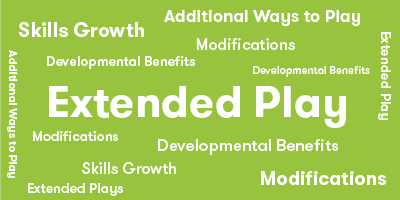
Extra Ways to Play the Game
Modify the play to allow pawns to move within the board instead of (or in addition tow) around the board. Players have the option of moving vertically or horizontally, but not diagonally. Once the pawn lands on a card, they can choose one card from either the vertical or horizontal row corresponding to the pawn. No two pawns can occupy the same space.
Materials Needed
No additional materials needed.
Developmental Benefits
This modification increases decision-making options, as players must analyze which move will give them the best option for play.
Extra Ways to Play the Game
Modify the play to allow pawns to move within the board in addition to (or instead of) around the board. The player must take the card they land on.
Materials Needed
No additional materials needed.
Developmental Benefits
This modification decreases the players options. This makes the player think more carefully about each move, and players may not always have their desired option.
Extra Ways to Play the Game
Allow an option to "shoot the moon." If a player chooses to, they can go for one of each of 16 Ingredient Cards. If the player succeeds, they win 50 points and all other players lose 10 points.
Materials Needed
No additional materials needed.
Developmental Benefits
This adds an element of risk and reward to the game. Players who choose to "shoot the moon" need to plan each move carefully to be able to gather all different cards. Once other players realize what the player is doing, they will also become more defensive to block the player's ability to get all the Ingredient Cards.
*Data compiled from CCSSI ELA Standards, WA Science Standards, and Washington Social Studies Standards
Game Details
- 72 Ingredient Cards
- 2 Wizard's Wild Cards
- 6 Orange Spell Cards
- 4 Pink Spell Cards
- 4 Wood Tower Pawns
- 4 Cauldrons
- 4 Score Cards
- 4 Corner Cards
- 10 Recipe Cards (for advanced play only)
- 1 Storage Bag
- 1 Rules Booklet
- Choosing a selection results in a full page refresh.
- Opens in a new window.











